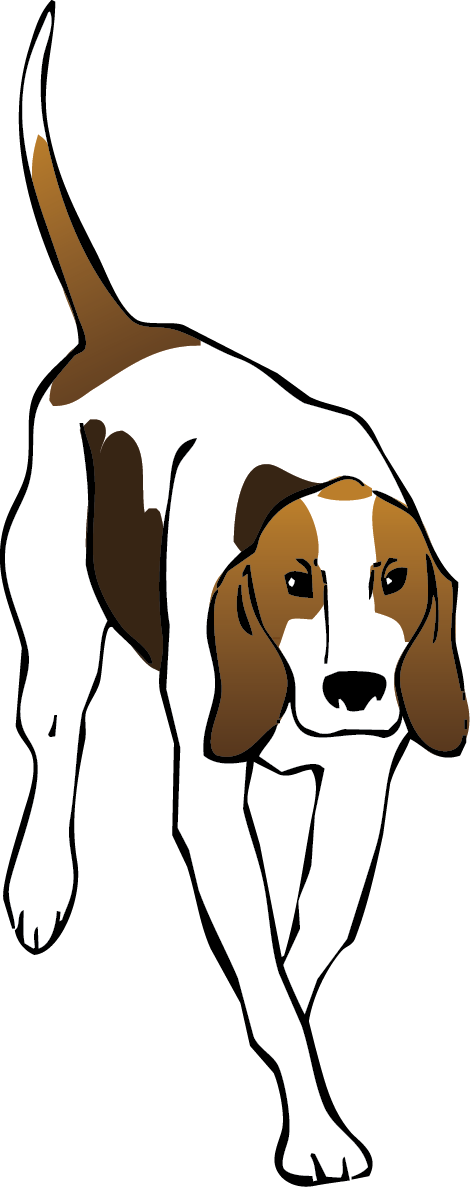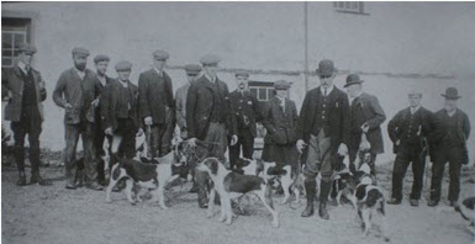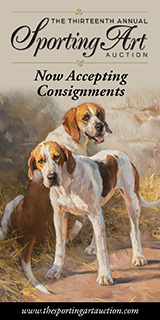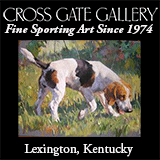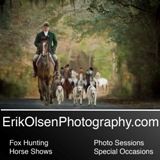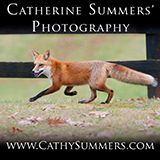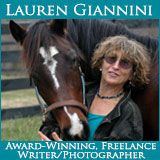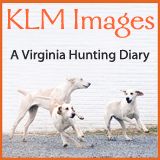Quorn Foxhounds
The Blue Birdseye Stock Tie
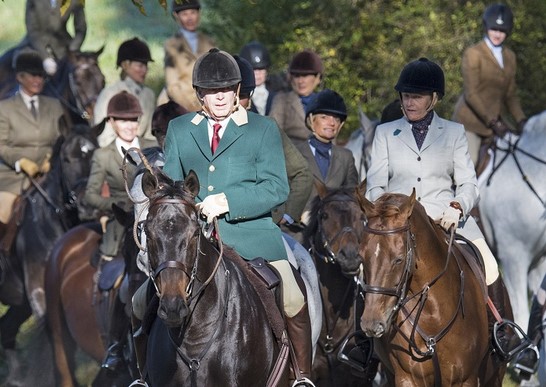 Blue Birdseye stock ties in the field at the Orange County Vixens’ Meet in 2020. / Joanne Maisano photo
Blue Birdseye stock ties in the field at the Orange County Vixens’ Meet in 2020. / Joanne Maisano photo
Six or seven years ago, Foxhunting Life published a story about an attractive item of attire from foxhunting’s earliest days―the blue birdseye stock tie. Eye-catching and colorful, it can be seen in eighteenth-century foxhunting prints if you look closely.
Mostly unknown in North America, the blue birdseye stock tie had long been worn by a stylish and knowledgeable few in England and Ireland. We decided it deserved to be resurrected here as well. So, we located appropriate material and introduced it to North American foxhunters in our shop. It was a hit, and since then, at the start of every new season―strictly for fun―we publish an article of reminder. And the story.
Atherstone Hunt Cancels Foxhunting Season
The two hundred-year-old Atherstone Hunt that hunts country in West Leicestershire and North Warwickshire (UK) has ceased hunting for the remainder of the season. Bordering the four hundred square mile Atherstone hunting country are the iconic Pytchley and Quorn hunts. According to the Daily Mail, a spokesman for the Atherstone said, “We are sad to report that following a hunt committee meeting on Monday, October 7, 2019, a decision was made for the Atherstone to cease hunting activities for the 2019/20 season with immediate effect. “The longer-term future of the Hunt and its country is being considered with regards to a possible amalgamation or sharing of kennels. “However, the welfare of the hounds remains the priority at this stage. “Arrangements have been made to draft hounds to other packs but while they remain in kennels they are being looked after by hunt staff under the supervision of the Masters. “We would like to thank everyone and in particular our farmers and landowners for their generous support.” The West Midland Hunt Saboteurs organization claims victory after an aggressive six-year campaign targeting the pack. The Canary reports that audio leaks from an Atherstone Hunt meeting revealed that acts by hunt followers had left the hunt uninsured. The alleged acts included a pro-hunting farmer riding a quad into a saboteur, one man slashing the tire on the group’s vehicle, and two men throwing manure at anti-hunt protesters. A spokesperson for the saboteurs’ organization claimed the hunt had been out only three times this season, that the huntsman had left, annual staff turnover was high, and that the hunt was losing members. Posted October 12, 2019
Read More
Squire Osbaldeston: A Sporting Prodigy
Squire Osbaldeston, MFH (foreground) on Ashton, with Sir Frances Holyoake-Goodricke on Crossbow, 1830, hunting the Pytchley in Melton Mobray, Leicestershire, England. Oil painting by John Ferneley
London-born in 1786, George Osbaldeston was a natural athlete. He rowed for various schools that he attended, including Eton and Oxford, neither of which he matriculated. He assiduously avoided academic work, but set high standards for rowdy behavior and was expelled from most of these fine institutions.
He was an outstanding cricketeer, bowling and batting as an amateur in numerous important matches. In 1818, however, he was barred for life from membership in a club as the result of an intemperate outburst, effectively finishing his career in important cricket matches.
Hugo Meynell: The Father of Modern Foxhunting
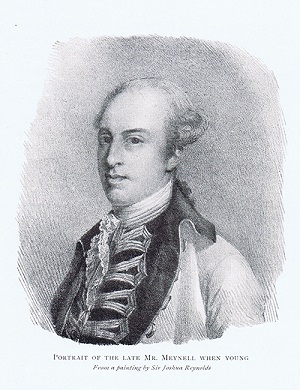 Hugo Meynell is known today as the father of modern mounted foxhunting. In the eighteenth century he transformed a sporting activity which attempted to control vermin with the slow and plodding Southern hound into an exhilarating chase at speed with fleeter Northern hounds and a scientific approach. In so doing, he set the stage for foxhunting’s Golden Age in the early nineteenth century.
Hugo Meynell is known today as the father of modern mounted foxhunting. In the eighteenth century he transformed a sporting activity which attempted to control vermin with the slow and plodding Southern hound into an exhilarating chase at speed with fleeter Northern hounds and a scientific approach. In so doing, he set the stage for foxhunting’s Golden Age in the early nineteenth century.
The great Mr. Meynell, designated by his admiring friends “The King of Sportsmen,” or “The Hunting Jupiter,” earned those titles by the sport he had shown. Without owning an acre of land in Leicestershire (his extensive estates being situated in remoter countries), he carried on [his sport in that] best hunting country in the world.
He considered horses merely as vehicles to the hounds. There are different opinions as to Mr. Meynell’s proficiency as an elegant horseman; but it is never disputed that his progress over a country was, like the whole course of his life, straightforward.
Martin Scott and the Modern English Foxhound
We republish, with permission, James Barclay’s article about Martin Scott, former MFH and eminent foxhound breeder. Martin Scott has been an engaged member of Foxhunting Life’s, Panel of Experts since our beginnings and has cheerfully answered any and all questions posed to him by our readers, for which we are continually grateful.
by James Barclay
Martin Scott visits with a descendant of Glog Nimrod 1904 / James Barclay photo
Martin Scott is an extraordinary man. As well as being a true and dedicated foxhunter, he is probably the only person I know who has a completely encyclopaedic brain when it comes to the breeding of the Modern English Foxhound. There is no one quite like him when you need to tap into a vast depth of knowledge on this subject—not only their breeding but the attributes of each and every generation.
See You at Second Horses
See You at Second Horses, Barclay Rives, Aterlerix Press, New York, 2014, Paperback, illustrated, 184 pages, $13.50, available at retail outlets including Horse Country Saddlery, Warrenton, VirginiaThe foxes! Oh, the foxes! When Barclay Rives undertook a marathon of foxhunting in 1999, when he went out with nine English hunts in ten days, it seemed like there was a fox popping out of every covert.
Rives, an honorary whipper-in for the Keswick and Bull Run Hunts (VA), writes about his English sporting adventure in See You at Second Horses, a delightful read that puts us galloping behind some great packs in the glory days before the infamous Hunting Act of 2004 banned hunting with hounds in the traditional manner in England and Wales.
Rives is an avid hunter who once hunted one hundred days a season, sometimes going out with Keswick in the morning and Bull Run in the afternoon. Saying he was gung-ho is an understatement. He jumped at the chance to join his friends Grosvenor and Rosie Merle-Smith to hunt with packs dating back to the 1700s: the Quorn (twice), the Cottesmore, the Fernie, and others, including a foot pack—the High Peak Harriers—after rabbits.
The Golden Age of Hunting?
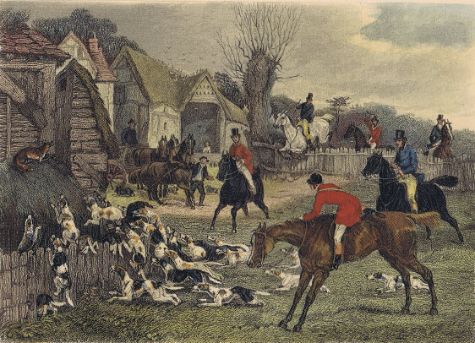 The Finish by Henry Alken
The Finish by Henry Alken
Foxhunters often evoke the nineteenth century as the belle-époque of English foxhunting. This may have to do with the extensive documentation provided by the famous artists and writers of the time. The efforts of Nimrod, Alken, and friends immortalized an age of rollicking runs across open countryside, dashing horsemen and women, and fine stout foxes flying across hill and dale.
Whilst The Golden Age as it is known has long since provided a benchmark of foxhunting excellence and excitement, we note that today’s foxhunters are blessed with some decided advantages.
The Mardale Hunt: Chapter 4
The Windermere Harriers at the Mardale Shepherds Meet, 1899 Here’s Chapter 4 of The Mardale Hunt by Ron Black. Through the courtesy of the author, Foxhunting Life is bringing you the entire book in installments every two weeks. You are free to download the book to your computer. We hope you have enjoyed the previous installments. Excerpt from Chapter 4This chapter recalls many of the hunts at Mardale. German Kaiser Wilhelm II visited Lakeland on holiday on a number of occasions from 1895 onward, staying with The Earl of Lowther, then Master of the Quorn in Leicestershire. The Kaiser met Ullswater huntsman Joe Bowman and may have hunted with him, for Bowman family lore has the Kaiser slipping Bowman a five-pound note. Author Beatrix Potter was in Lakeland on one occasion when the Kaiser was due to arrive and wrote the following entry in her diary: “Tuesday August 15th 1895. We consumed three whole hours waiting to see the Emperor, not very well worth it. I had seen him in London. I think he is stouter. I was not particularly excited. I think it is disgraceful to drive fine horses like that. First came a messenger riding a good roan belonging to Bowness, which we could hear snorting before they came in sight, man and horse both dead-beat. He reported the Emperor would be up in ten minutes, but it was twenty. The procession consisted of a mounted policeman with a drawn sword in a state approaching apoplexy, the red coats of the Quorn Hunt, four or five of Lord Lonsdale’s carriages, several hires and spare horses straggling after them. There were two horses with an outside rider to each carriage, splendid chestnuts thoroughbreds floundering along and clinking their shoes. They were not going fast when we saw them, having come all the way from Patterdale without even stopping at Kirkstone to water the horses, to the indignation of mine host, and an assembly of three or four hundred who had reckoned on this act of mercy. I think his majesty deserved an accident and rather wonder he didn’t have one considering the smallness of the little Tiger sitting on the box to work the break.” (To access downloads of previous installments, click here.)... This content is for subscribers only.Join NowAlready a member? Log in here
Read More
Opening Day with the Quorn
 Quorn Opening Meet, October 21, 2011 / Nico Morgan photo
Quorn Opening Meet, October 21, 2011 / Nico Morgan photo
The famous Quorn Hunt, founded in 1696, is arguably the oldest hunt in England. It takes its name from the Leicestershire village of Quorn where hounds were kenneled from 1753 until 1904. Hugo Meynell, known as the Father of Foxhunting, served as Master from that date until 1800.
Meynell is credited with organizing foxhunting as we know it today. In his day, the Leicestershire country was open grassland. Meynell devised the system of planting small coverts within the pastureland in which foxes could lie.
